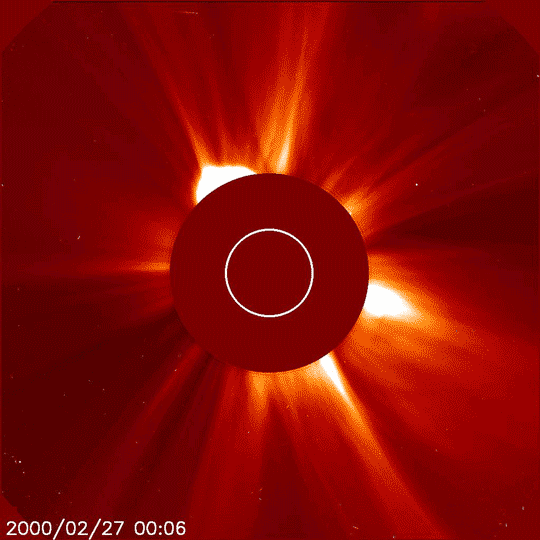
The Sun's Corona, A Fiery Halo, Is Still a Mystery to Scientists

Paul Sutter is an astrophysicist at The Ohio State University and the chief scientist at COSI science center. Sutter leads science-themed tours around the world at AstroTouring.com. Sutter contributed this article to Space.com's Expert Voices: Op-Ed & Insights.
There are many things we don't understand in this universe — and some of those things sit right in our own backyard. Not our literal backyard, of course, but in one case, at the very heart of our solar system: the sun itself. Total solar eclipses offer a crucial chance to learn more about this star's unusual outer atmosphere.
Over the past century, scientists have puzzled out the process of nuclear fusion that has powered the sun for billions of years, detected neutrinos emanating from those fiery reactions in the core, modeled the process of energy transfer via conduction and predicted the fate of the sun as a white dwarf billions of years from now.
But the corona is something else. The thin, tenuous outer atmosphere of the sun extends millions of kilometers past the photosphere, what we usually think of as the sun's visible "surface." That makes the corona thicker than the main body of the sun itself, for those of you keeping track. [Total Solar Eclipse 2017: Here Are the Best Live-Video Streams to Watch]
The corona is so dim that it's usually totally overwhelms by the light emitted from the photosphere. But during a total solar eclipse, that light is conveniently blocked, giving us the spectacle of a moon embraced by a fiery halo. The corona is finally allowed its moment to shine. For those of you lucky enough to find yourselves on the path of totality on Aug. 21 (boldly assuming it won't be cloudy that day), you'll get to see this rare sight with your own eyes.
Did I mention that the corona has a temperature of over a million Kelvin? That seems like an important detail. That's roughly the same temperature as the sun's cacophonous nuclear core, and it's way, way hotter than the bulky mass of the rest of the sun.
Of course, you wouldn't feel that heat if you swam through it. The corona is incredibly thin, and its temperature is a measure of the average speed of the particles that comprise it. High temperatures mean that a single particle will slam into you like a bullet, but if there are hardly any particles around to begin with, you'll barely feel a warm breeze.
Get the Space.com Newsletter
Breaking space news, the latest updates on rocket launches, skywatching events and more!
So how does the corona get so hot, despite extending far beyond the surface of the sun? Well, scientists are not exactly sure. It might have something to do with magnetic fields, though. We know that as a spinning ball of charged particles, the sun carries some pretty hefty magnetic energy. Those magnetic fields get warped and twisted and, eventually, can burst apart, releasing tremendous amounts of stored energy in the process.
It's this cycle of twisting-and-releasing magnetic field lines that scientists think is responsible for sunspot cycles and solar weather like flares and coronal mass ejections.
Does this process of releasing stored magnetic energy feed the flames of the corona? Its intensity does seem to be linked to the sunspot cycle, which is an important clue. But the detailed physics have bedeviled scientists for decades, despite extensive study and simulation.
So, when you feast your eyes on the plasmatic glory of the sun's corona this August, maybe you could take a crack at trying to understand it, too.
Follow Paul @PaulMattSutter and facebook.com/PaulMattSutter. Follow us @Spacedotcom, Facebook or Google+. Originally published on Space.com.
Join our Space Forums to keep talking space on the latest missions, night sky and more! And if you have a news tip, correction or comment, let us know at: community@space.com.

Paul M. Sutter is an astrophysicist at SUNY Stony Brook and the Flatiron Institute in New York City. Paul received his PhD in Physics from the University of Illinois at Urbana-Champaign in 2011, and spent three years at the Paris Institute of Astrophysics, followed by a research fellowship in Trieste, Italy, His research focuses on many diverse topics, from the emptiest regions of the universe to the earliest moments of the Big Bang to the hunt for the first stars. As an "Agent to the Stars," Paul has passionately engaged the public in science outreach for several years. He is the host of the popular "Ask a Spaceman!" podcast, author of "Your Place in the Universe" and "How to Die in Space" and he frequently appears on TV — including on The Weather Channel, for which he serves as Official Space Specialist.









